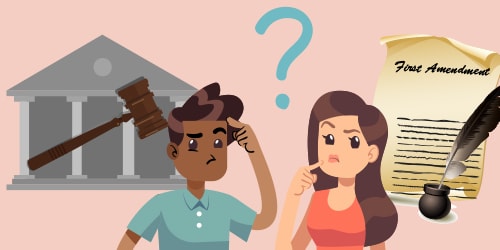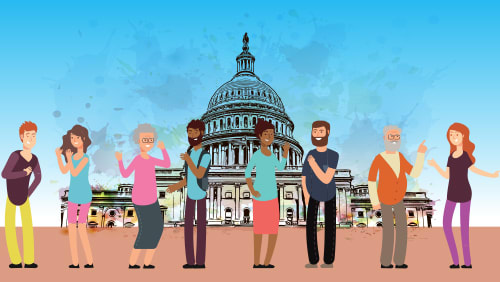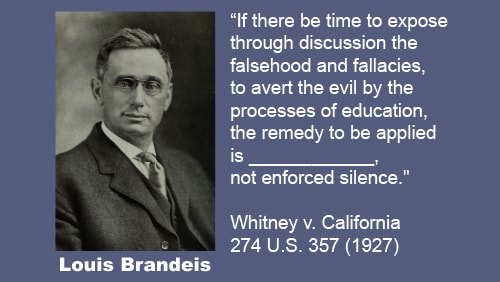Are You a First Amendment Scholar?

First Amendment rights were essential in ensuring a fair hearing for which of the following social causes?

Which of the following IS protected by the First Amendment?

Which of the following is NOT protected by the First Amendment?

True threats can be prosecuted under the law. A “true” threat is distinct from a threat that is made in jest. The Supreme Court noted that “a threat must be distinguished from what is constitutionally protected speech” (see Watts v. United States (1969)) and recognized that “uninhibited, robust, and wide-open” political debate can at times be characterized by “vehement, caustic, and sometimes unpleasantly sharp attacks on government and public officials” (see New York Times Co. v. Sullivan (1964)). Hence, a true threat must be viewed in its context and distinguished from protected hyperbole.
Not all speech is protected by the Constitution. Here are the categories of unprotected speech.Your free speech rights include the right to silence another person.

You get into a very heated shouting match with another student over the current political election and your opposing views on it. Is this considered protected speech under the First Amendment?

You get into a very heated shouting match with another student over the current political election and your opposing views on it, so you shove him to the ground. Is this considered protected speech under the First Amendment?

You are mad at a classmate so you decide to use your role as a writer for the school paper to publish a false story claiming he is a shoplifter.

The CEO of a famous restaurant chain, which has a franchise on your state university campus, has taken an unpopular position on a controversial new proposed law. You plan to encourage other students to protest outside this restaurant chain. Would this protest be considered protected expression under the First Amendment?

The CEO of a famous restaurant chain has taken an unpopular position on a controversial new proposed law. You plan to block the entrance to the restaurant on your state university campus so that students cannot buy food there. Is this considered protected speech under the First Amendment?

In 1859, English Philosopher John Stuart Mill published an essay that is widely regarded as one of the most eloquent defenses of free speech ever written. This essay is called:

A speech can be permanently canceled by the government if protesters or angry members of the audience cause or threaten to cause a disruption.

Further reading:
Disinvitation Season: Protected Counter-Speech or Heckler’s Veto?
According to Supreme Court Justice Louis Brandeis, the remedy for bad speech is what?

“If there be time to expose through discussion the falsehood and fallacies, to avert the evil by the process of education, the remedy to be applied is more speech, not enforced silence” wrote Justice Louis Brandeis in his concurring opinion in Whitney v. California (1927). His statement forms the essence of the counter-speech argument that the best way to oppose bad speech is with good speech, and a far superior alternative to censorship.
Reading: President Obama - Student Protests Should Embrace Free SpeechThere’s nothing you can do about speech you don’t like.

Submit Email
You got {number correct}/{number of questions} correct answers

You got {number correct}/{number of questions} correct answers

You got {number correct}/{number of questions} correct answers
